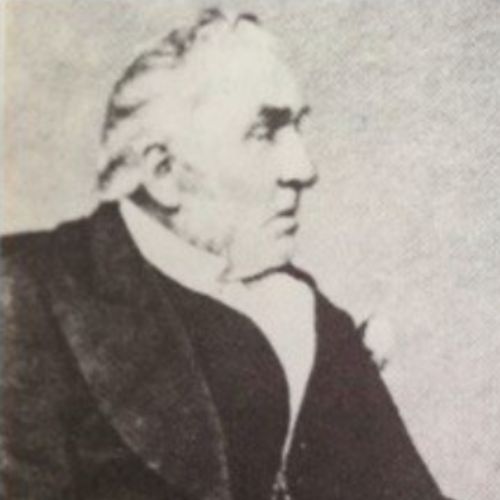1799-1876
Father
Gabriel Waterford
Mother
Ann
Siblings
Mary, Michael, Ann, Philadelphia, Phillis, Gabriel, Robert, Hannah, George
Married
Mary Griffiths (nee Brown), Margaret Burn, Susannah Merrick (common law), Elizabeth Hunt and Eliza Doherty.
Children
William (2), John Merrick, Hugh James and Ellen Belle
William’s Life
William Waterford was born in Limpsfield, Surrey, the seventh child of Gabriel and Ann Waterford. Gabriel was a veterinarian. William’s calling at that time was stated as a groom.
William was convicted of forgery at the March Assizes of Kent at Maidstone in April, 1821. He was condemned to death but later reprieved and sentenced to transportation for life. He was sent to the hulk, Invicta, to await transportation.
On 21, July 1821, he boarded the ship ‘Minerva” for transport to New South Wales. The ship arrived late in December the same year and he was assigned to Bowman of Windsor.
He was next recorded as having married Mary Griffiths/Brown and as owning a small farm at Windsor. Mary died in childbirth and William returned the farm to the children of her first marriage.
Later he married Margaret Burn, who also died in childbirth in 1830. Margaret had been a convict.
William took Susannah Merrick as his common law wife in 1831. They had a child, John Merrick Waterford. John grew up in the Hawkesbury district.
In the service of the Bowman’s, William Waterford travelled widely through the colony taking up large tracts of land for his employers. Near Singleton he took up Archerfield and Grampian Hills.
Later he travelled to the north and north-west where he took up a large tract of land previously unknown to white man. He gave and Aboriginal Man £5.0.0 to show him the land. Bowman later claimed that this was too much. The boundaries were marked by mountains and the size was many hundreds of thousands of acres. The property was known as Terry Hie Hie. A portion of this was subsequently sold.
William married Elizabeth Hunt in 1834.
William then left the Bowman family and took up Bannockburn, north of Inverell, which he later sold to his partner James Hales, reputedly for about £30,000. He then returned to the Hunter Valley and bought a hotel and land at Murrundi.
Later, while retaining the license of the ‘Farmer’s Arms’ hotel at Murrundi, William leased a considerable area of land around the Chain of Ponds Hotel which he owned and ran until 1856.
He and Elizabeth were planning to sell up all their land and go to her people in Ireland. The land was sold and then Elizabeth died suddenly. William carried on and went to Ireland alone. The ship’s long voyage to Europe took advantage of the trade winds, and the best route was via America. William’s ship called in to America to pick up passengers bound for Ireland. One of these passengers was Eliza Doherty who happened to be Elizabeth’s cousin and William was invited to her family’s home.
William spent considerable time with Eliza’s family and then married her. His brothers Robert and George attended the wedding. A joy to William who had not seen his brothers in 37 years.
He was very generous to her family and re-furbished pig sties with cement floors and red roof tiles paying high wages to the workman who then demanded further high wages.
They had a son, William (2) while still in Ireland and, as William (1) was getting restless and depleting his cash reserves they decided to return to New South Wales.
William (1), Eliza and William (2) departed Ireland on the ‘Saldanha’ and arrived back in Australia in August 1860.
William accepted an offer to manage Merotherie, Dunedoo on a partnership basis with Bowman.
William and Eliza had two more children, Hugh James and Ellen Belle.
He took up land for himself, ‘Morton Bay’, in the Leadville area near Dunedoo. The ownership of ‘Morton Bay’ was one quarter to himself William I, one quarter to his son, William Waterford II, one quarter to his son Hugh James Waterford and one quarter to his daughter Ellen Belle Waterford (children at that time).
At the time, the law stated you had to live on your property and women could not own property. The four blocks were in a square and one hut was built covering a corner of each block. To prove they lived there, the children had to spend time, without their parents, often sharing time with shepherds in the hut.
William was killed when he fell from his horse during a hunt. It is perhaps an irony that he met his death engaging in a pastime which was always considered the preserve of the English aristocracy.
Authored by Paula O’Connor E &OA

